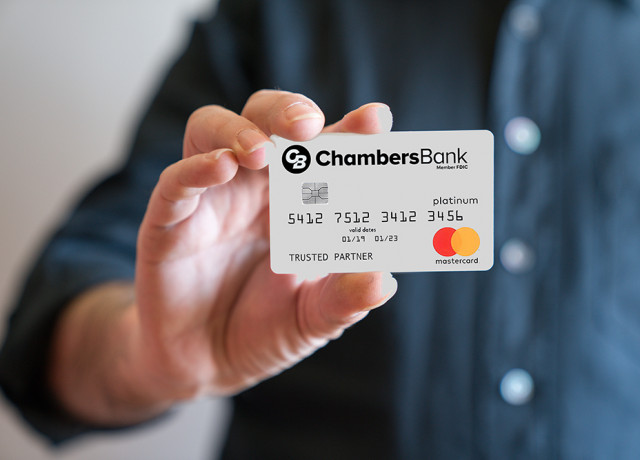Remember that famous holiday tune “Let It Snow” by Frank Sinatra? Snow is sure beautiful, but this season, we at Chambers Bank want to see dollars snowing into your accounts. Maybe it’s time to just “Let It Grow.” Your savings and net worth, that is. And we have just the thing to help: our Personal Finance tool. It’s free, it’s secure, and it will give you insights about your spending so you can make good financial decisions and watch your assets grow. If you’re not sure where to start, follow these pro tips to help build your budget and get started with Personal Finance.
Determine Your Income and Expenses
To draft a new budget, it’s important that you know your monthly income and expenses. Start by determining your net income. If you’re a wage earner, your employer is likely deducting taxes, health insurance, retirement plan contributions, and HSA contributions from your gross income, so look at your pay statements and gather an accurate monthly net income amount.
If you are self-employed, calculating your net income is a little different. You will need to determine your gross income minus your business expenses to get your net income. If your income fluctuates from month to month, take an average from at least six months of earnings to get an accurate number. Keep in mind that your self-employment tax rate is 15.3%. Use your net income amount and multiply that by 92.35% to know how much of your net income is subject to self-employment tax.
Now that you have a net income amount, you need to get an accurate picture of your monthly expenses, which includes everything from your mortgage, rent, utility bills and car payments to gym memberships, groceries, savings, and loan payments. If you have semi-annual or annual expenses, don’t forget to divide these out into monthly expenses as well. You can use this worksheet from the Consumer Financial Protection Bureau if you need help getting started, or connect with a Chambers Bank representative to discover more resources.
Choose a Budgeting Method
According to a May 2021 survey conducted by The Penny Hoarder, over 55% of Americans don’t use a budget to manage their income. If you fall into that statistic, now is a great time to take control of your finances and learn how to start!
When you’re searching for a way to budget your income and expenses, you’ll learn there are a variety of methods out there that work nicely. The one you choose really just depends on your lifestyle, spending habits, and individual preferences. Over time, you may also find it refreshing to switch budget methods, and that’s okay too! Logicaldollar.com has an excellent list of budgeting methods you can look over, and here are some of the more popular ones:
- The 50/30/20 Budget Rule. Spend 50% of your after-tax income on fixed expenses, 30% on variable expenses, and 20% on your financial goal-based expenses.
- Zero-Based Budget. Every dollar has a home with this budgeting method. Before a new month begins, you evaluate your needs and wants and then divvy up the dollars accordingly, so your budget adjusts down to zero at the month’s end.
- The Traditional Budget. With this budgeting method, you simply subtract your expenses from your after-tax income. Anything left over can be used for spending and investing.
Use the Chambers Bank Personal Finance Tool to Track Your “Let It Grow” Progress
We’re excited for you to learn about Personal Finance, a free digital money management tool available to you as a Chambers Bank member! With Personal Finance, you can see your account balances all in one place—credit cards, loans, checking and savings, 401ks, and more. You can import account information from most institutions, and your Chambers accounts are connected automatically upon enrollment.
Once you get all your accounts in one place, Personal Finance can help you identify the areas in your financial life that need the most attention. You’ll get views of your income and expenses in easy-to-read graph formats, giving you a more intuitive angle of your finances over specified time periods. And you don’t need to make manual entries, either. Personal Finance automatically categorizes and tracks activity from all accounts.
To get started with Personal Finance, simply enroll in Online Banking and verify your email address. Contact us at Chambers Bank if you have any questions about enrolling in Personal Finance or Online Banking.
Take Advantage of Automatic Savings
After you get your budget in order, take advantage of Chambers Bank automatic savings transfers and “Let It Grow.” Many experts say you should save at least 20% of your income per month to allocate toward short- and long-term savings goals. How much you save is up to you, but whatever amount you decide on, make things easier and have your allocation transferred automatically to a Chambers Bank Savings Account. Just complete an Automatic Transfer Form and submit the form securely online or at any Chambers Bank branch locations.
You can also add cash to your savings account by signing up for our Savings Cents program, a simple tool that makes everyday purchases count toward your overall savings goals. Once you enroll, we will automatically round up your daily debit card purchases to the nearest dollar and deposit the “change” into your savings account on the next business day. All you need is a Chambers Bank checking account, debit card, and savings account to get started.



